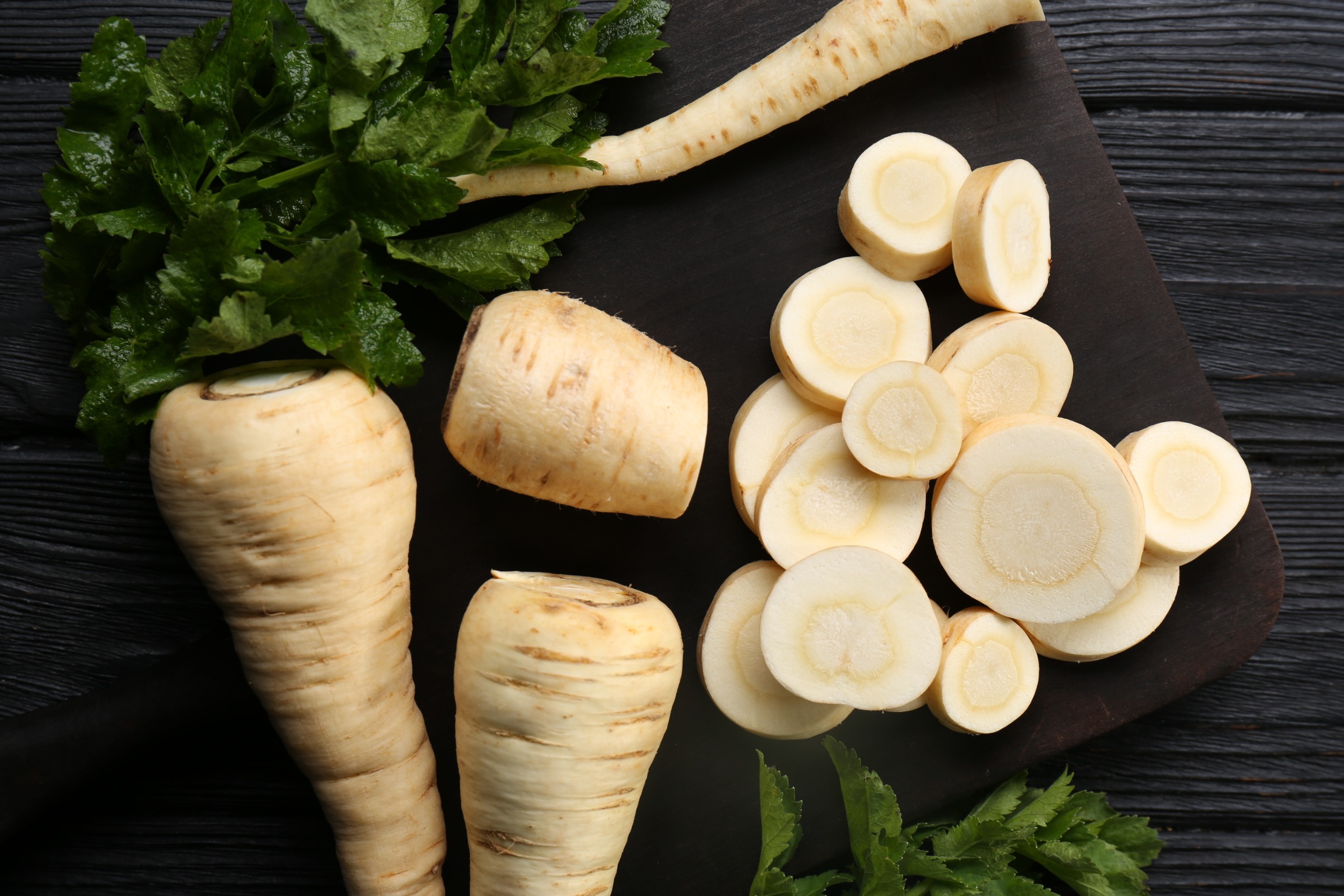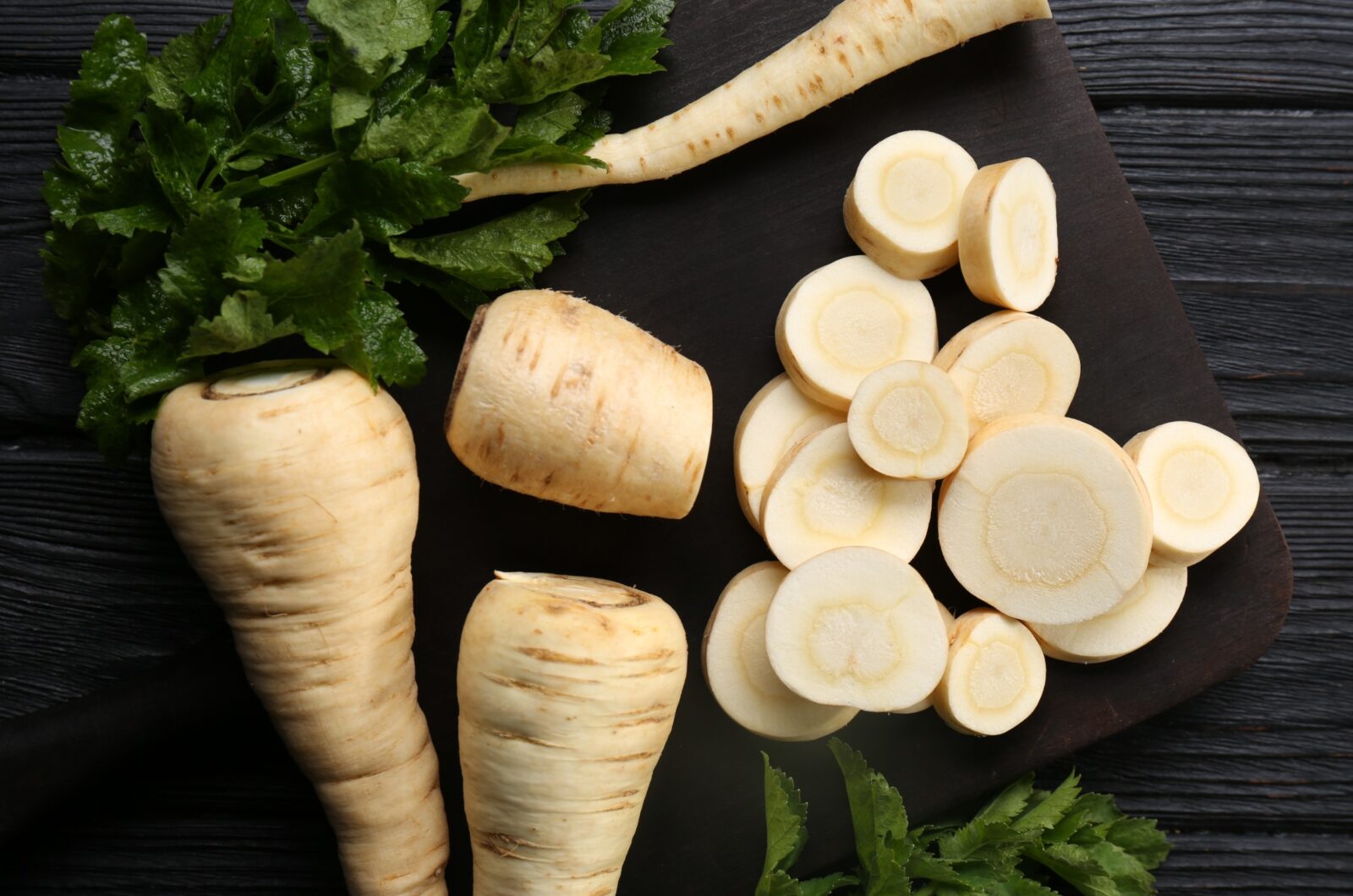Check this out!
Parsnips may be one of the most underrated root vegetables, but they deserve a spot in your pantry. With their creamy white color and sweet, nutty flavor, parsnips add depth to soups, stews, and mashes. Canning parsnips is a simple way to preserve their winter harvest and keep them shelf-stable for hearty meals all year long.
(I sometimes use affiliate links in my content. This will not cost you anything but it helps me offset my costs to keep creating new canning recipes. Thank you for your support.)
By Diane Devereaux | The Canning Diva®
Last updated: September 4, 2025
Key Takeaways
- Parsnips are an ancient root crop once prized as a natural sweetener before sugar was common.
- They are rich in fiber, potassium, folate, and Vitamin C, making them heart-healthy and nutrient-dense.
- Pressure canning parsnips locks in their flavor and makes them ready-to-use for soups, mashes, and roasts.
Rooted in Tradition: A Guide to Home Canning Parsnips
With their creamy white color and subtly sweet, nutty flavor, parsnips are one of the most underrated root vegetables in the modern kitchen. But centuries ago, before sugar was readily available, parsnips were a prized sweetener and staple in cold-climate diets. Today, they’re making a comeback, not just on the dinner table, but in the canning pantry.
Canning parsnips allows you to take advantage of their winter harvest and store them shelf-stable for soups, stews, mashes, and more. When preserved at their peak, they hold up beautifully under pressure canning and become a reliable, nourishing addition to your home food supply.

A Brief History of Parsnips
Parsnips (Pastinaca sativa), native to Europe, have been cultivated since antiquity and belong to the carrot family. Ancient Romans enjoyed them raw and cooked, often using them as a sweetener before cane sugar reached the continent.
By the Middle Ages, parsnips were a dietary staple throughout Northern and Eastern Europe, valued for their ability to overwinter in the ground and develop more sweetness after frost exposure. Early American settlers carried parsnips to the New World, where they thrived in colonial gardens.
Nutritional Benefits of Parsnips
Parsnips are high in complex carbohydrates, fiber, and essential vitamins. They deliver:
- Potassium for heart health.
- Folate for cellular health and energy.
- Vitamin C for immune support.
Their fiber aids digestion, and their natural sugars provide an energy boost—especially welcome in the colder months when fresh produce is scarce.
How to Use Home-Canned Parsnips
Once canned, parsnips are more flavorful and ideal for quick additions to soups, stews, or purees. Drain and mash them with butter and herbs as an alternative to potatoes or blend them into creamy vegetable soups for natural sweetness and depth. They pair beautifully with carrots, onions, and celery in hearty winter dishes, and can even be roasted straight from the jar for a quick side.
You can use home-canned parsnips in a variety of hearty, comforting dishes. Try adding them to Beef and Barley Stew, Roasted Winter Vegetable Soup, or a creamy Parsnip and Potato Mash. They also shine in a Curried Root Vegetable Bowl or blend into a smooth Parsnip and Apple Bisque. For a rustic side, roast drained parsnips with olive oil, garlic, and rosemary, or mash them with cream and parmesan for a twist on classic mashed potatoes. Their naturally sweet, nutty flavor adds depth to any dish that calls for carrots or potatoes.
Canned parsnips keep their natural sweetness and creamy texture, making them versatile for quick, nourishing meals. Use them:
- In soups like Roasted Winter Vegetable Soup or Parsnip and Apple Bisque.
- Mashed with butter and herbs as a potato alternative.
- Roasted straight from the jar with garlic and rosemary.
- Blended into creamy vegetable purees or bisques.
- Added to stews and casseroles for sweet, nutty depth.
Pressure Canning Parsnips
Canning parsnips brings sweet, earthy comfort to the pantry and offer a unique alternative to more common root vegetables. Whether you grow your own or buy them in bulk at harvest time, preserving parsnips adds variety and nourishment to your meals – with no root cellar required.
Yields: About 7 quarts or 14 pints
Processing Time: 35 minutes for quarts and 30 minutes for pints
Ingredients
- 12 to 14 pounds fresh parsnips
- Boiling water
- Pickling salt (optional: 1 tsp per quart or ½ tsp per pint)
Instructions
- Wash, peel, and trim the ends. Cut into uniform chunks, rounds, or batons.
- Raw pack parsnips into jars, leaving a 1-inch headspace. Using a funnel, ladle boiling water to cover the parsnips, maintaining the 1-inch headspace. Add salt if desired.
- Remove any trapped air pockets and add additional hot water if necessary to maintain the 1-inch headspace.
- Wipe the jar rims with a damp washcloth dipped in vinegar. Apply lids and rings and hand tighten.
- Process in a pressure canner at 10 PSI or according to your elevation and canner type. Process quarts for 35 minutes and pints for 30 minutes.
People Often Ask
A: No, parsnips are raw-packed. The pressure canning process cooks them to a tender texture while preserving nutrients.
A: They’re excellent in soups, stews, mashes, and roasted dishes. Their naturally sweet flavor pairs well with carrots, onions, garlic, and herbs.
A: Yes, parsnips soften some during pressure canning, however they hold their shape well. When cooking with home canned parsnips they develop a tender, creamy texture. They will also hold their shape well when used in soups and stews but may break down if stirred too vigorously or cooked for prolonged periods of time.
About the Author:
Diane Devereaux, The Canning Diva®, is an internationally recognized food preservation expert, author, and educator with over 30 years of home canning experience. She’s the author of multiple top-selling canning books and teaches workshops across the U.S. Learn more at TheCanningDiva.com.




